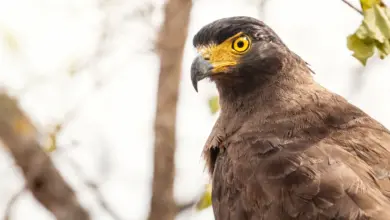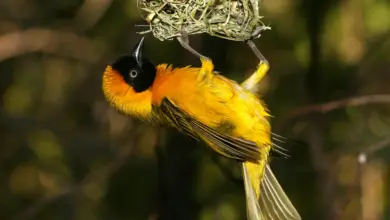Long-tailed Sylph Hummingbird
Long-tailed Sylph Hummingbird (Aglaiocercus kingi)
The Long-tailed Sylph (Aglaiocercus kingi) is a South American hummingbird that occurs from Venezuela south to Bolivia. It is the only sylph found on the east slopes of the Andes.
In Colombia and Ecuador, the Long-tailed Sylph is also found on the western slopes of the Andes.
It is the most widespread me mber of its genus.
Description

The Long-tailed Sylph is a short-billed, long-tailed hummingbird.
The male can easily be identified by his extremely elongated tail. The upper side of the tail feathers are glittering blue-green. The male has a glittering green crown (top of the head) and throat.
The female’s tail is much shorter. Her throat is white, speckled with green. Her abdomen is a tawny buff.
Subspecies and Ranges:
Aglaiocercus kingi kingi – Nominate Species (Lesson, 1832) – Range: East Andes of Colombia
ID: Blue crown
- Aglaiocercus kingi margarethae (Heine, 1863) – Range: North-central and coastal Venezuela
- Aglaiocercus kingi caudatus (Berlepsch, 1892) – Range: Western Venezuela and North Colombia
- Aglaiocercus kingi emmae (Berlepsch, 1892) – Range: Central Andes of Northern Colombia to western Andes of South Colombia and Northwest Ecuador
- ID: Males lack the blue throat patch. The tail is mostly blue.
ID: Blue crown. Green tipped tail feathers.
- Aglaiocercus kingi mocoa (DeLattre and Bourcier, 1846) – Range: Central Andes of South Colombia, Ecuador and Northern Peru
- Aglaiocercus kingi smaragdinus (Gould, 1846) – Range: East Andes of Peru and West Central BoliviaDescription
Nesting / Breeding
The male’s tail feathers are so long that they make flying cumbersome and overcoming this challenge requires a certain level of fitness and strength for the male to survive – which, in turn, attracts females to the male with the longest tail as they associate a long tail with strength.
Hummingbirds are solitary in all aspects of life other than breeding, and the male’s only involvement in the reproductive process is the actual mating with the female. They neither live nor migrate in flocks; and there is no pair bond for this species. Males court females by flying in a U-shaped pattern in front of them. He will separate from the female immediately after copulation. One male may mate with several females. In all likelihood, the female will also mate with several males. The males do not participate in choosing the nest location, building the nest, or raising the chicks.
The nest is a suspended ball of moss that is fastened to leafy twigs with a side entrance. The average clutch consists of one white egg, which she incubates alone, while the male defends his territory and the flowers he feeds on. The young are born blind, immobile, and without any down.
The female alone protects and feeds the chicks with regurgitated food (mostly partially digested insects since nectar is an insufficient source of protein for the growing chicks). The female pushes the food down the chicks’ throats with her long bill directly into their stomachs.
As is the case with other hummingbird species, the chicks are brooded only the first week or two and left alone even on cooler nights after about 12 days – probably due to the small nest size. The chicks leave the nest when they are about 20 days old.
Diet / Feeding
The Long-tailed Sylphsprimarily feed on nectar taken from a variety of brightly colored, scented small flowers of trees, herbs, shrubs, and epiphytes.



